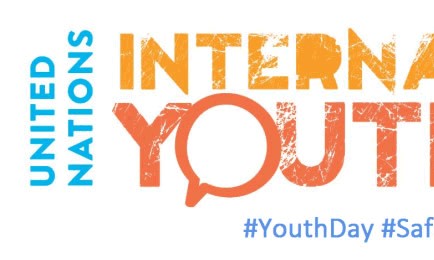Safe Spaces for Youth
By Surabhi Dogra
Youth Network Member, Lancet Standing Commission on Adolescent Health and Wellbeing

Today’s youth will be essential to achieving the Global goals/SDGs. Freedom of expression will be an essential element of effective youth participation. Creating enabling in safe environments for adolescents and young people will be necessary in this process. Such spaces to provide a level-playing field for debate and discussion for youth from varied race, ethnicities, caste, class and religion. Youth organisations across the world play a pivotal role in creating these spaces for developing youth narratives in policy, advocacy and decision making.
Sustainable safe spaces are important in promoting equity in dialogue as well as participation in day-to-day living. Youth friendly spaces must not exist in isolation and should rather extend to all public spaces that need to be developed and maintained in a manner that deems them as “youth friendly”. Caregiving facilities such as health centres should be perceived as accessible focal points for seeking healthcare and advice for overall well-being. This can help to promote health seeking behaviour for adolescent health friendly services to a group often excluded from mainstream discussion on access to medical spaces. This is, however, dependent upon the capacity and resources of health systems to provide adolescent and youth friendly services envisioned under the Universal Health Coverage paradigm.
Gender based restrictions on mobility in public spaces act as a hindrance for girls and young women to access spaces freely and in an equitable manner. Also, affordable and youth-dedicated transport methods, connectivity channels and pathways are crucial in enabling access to key spaces or facilities for young people. In rural India, lack of safety while navigating longer distances beyond the village area, along with other factors, prompt families to discourage girls and young women from pursuing higher education.
Young boys and men may be permitted to venture out of their homes into society with more relative ease but are often pushed into violent circumstances. Due to space constraints in urban areas, they are often compelled to use public facilities as meeting points. This further impedes the ability for young girls to freely access public facilities such as community bathroom amenities etc. This highlights how gender roles in patriarchal societies can restrict public access for girls while labelling young boys as “barriers” to safe spaces. In the 21st century, myths and taboos linked to menstrual hygiene continue to dictate the mobility of adolescent girls and women. This can be seen in the form of traditional practices of restricting admission for females in places of worship in India or the practice of shunning menstruating females to isolated spaces outside the home in the neighbouring country of Nepal. Young people in humanitarian settings and conflict require immediate attention to address their needs that are often left unheard. The needs of vulnerable groups of adolescents and young people with disabilities, mental health conditions, chronic health conditions, struggling with addiction or those in the prison systems must be heard and discussed for greater visibility and action.
In the digital era, cybercrime, cyberbullying and viral messaging fuel harmful acts of hatred against marginalised communities and individuals. Unsafe digital spaces also lead to manifestation of acts of violence and vice versa. Data privacy and cybersecurity for young people is imperative to ensure a democratic digital ecosystem.
The World Programme Action for Youth (WPAY) under the Proposals for Action recognises the need for development of safe and common spaces for young people. “National Governments as well as local authorities and community development agencies should incorporate leisure-time activity programmes and facilities in urban planning, giving particular attention to areas with a high population density. Equally, rural development programmes should pay due attention to the leisure needs of rural youth.”
